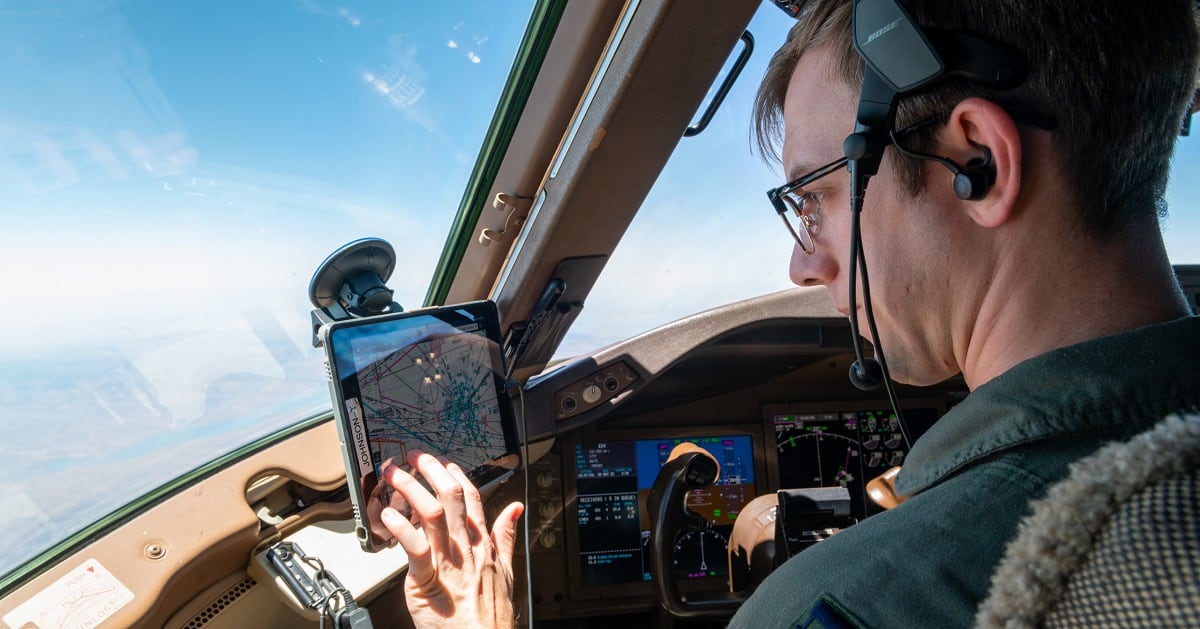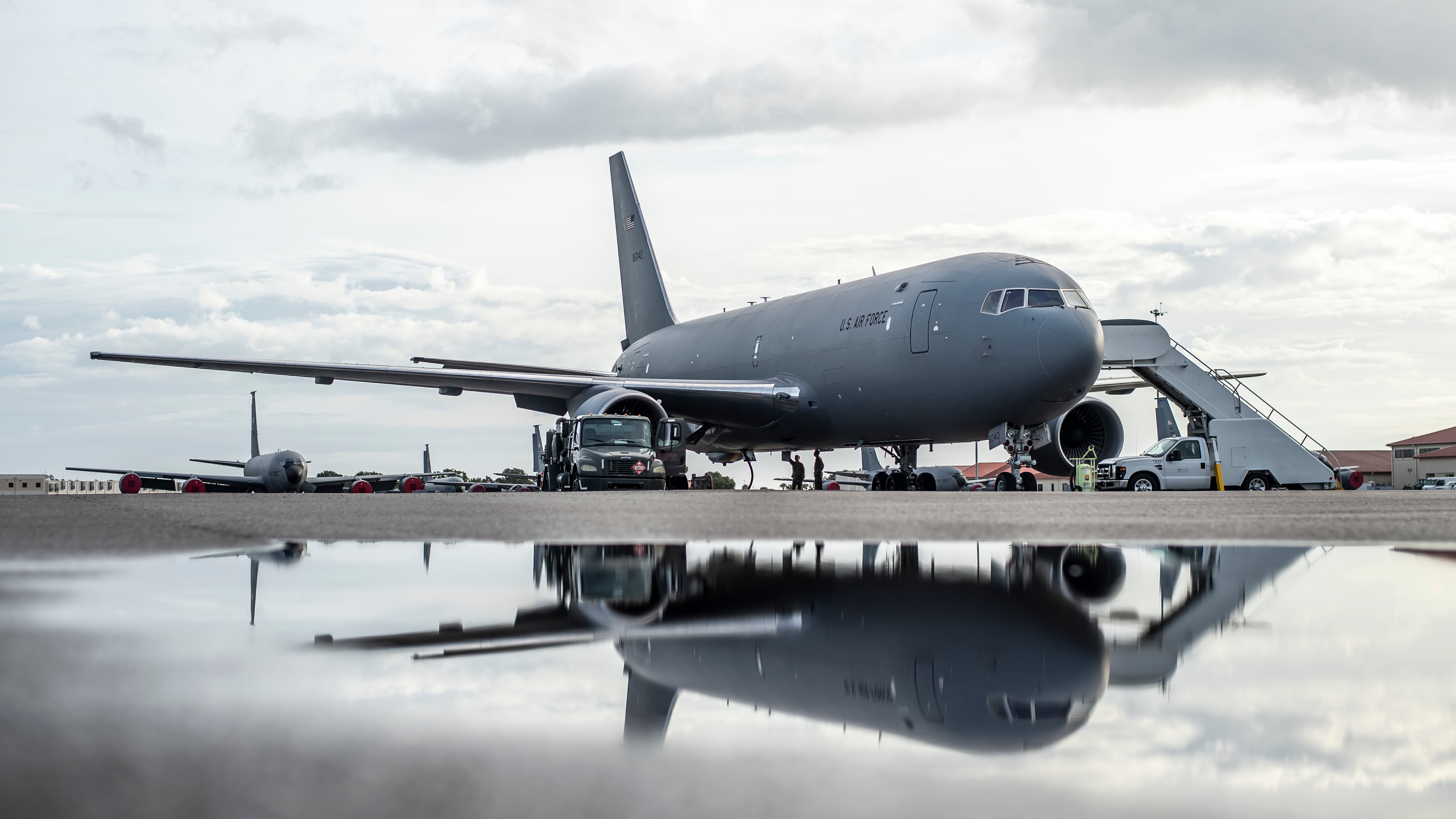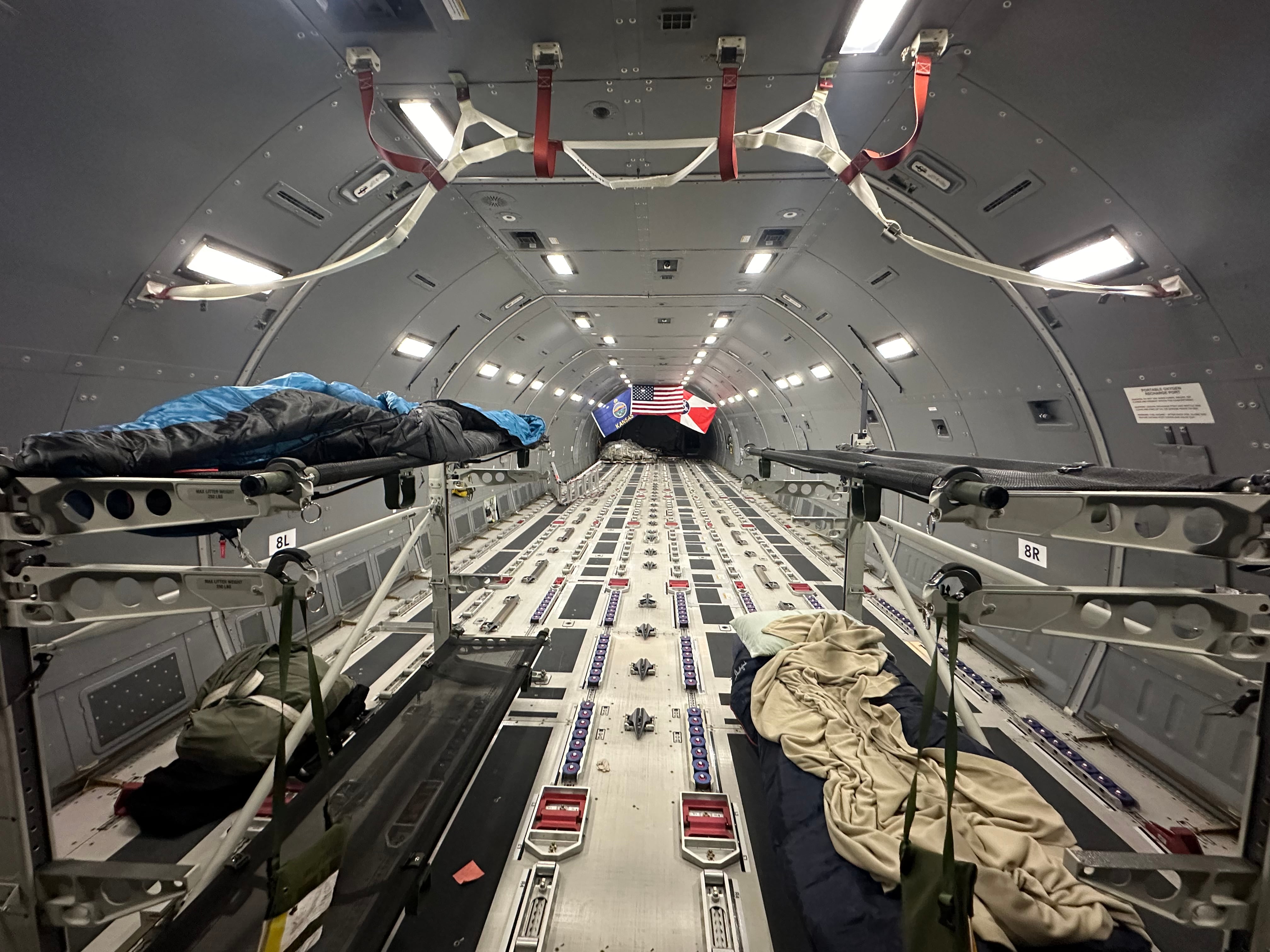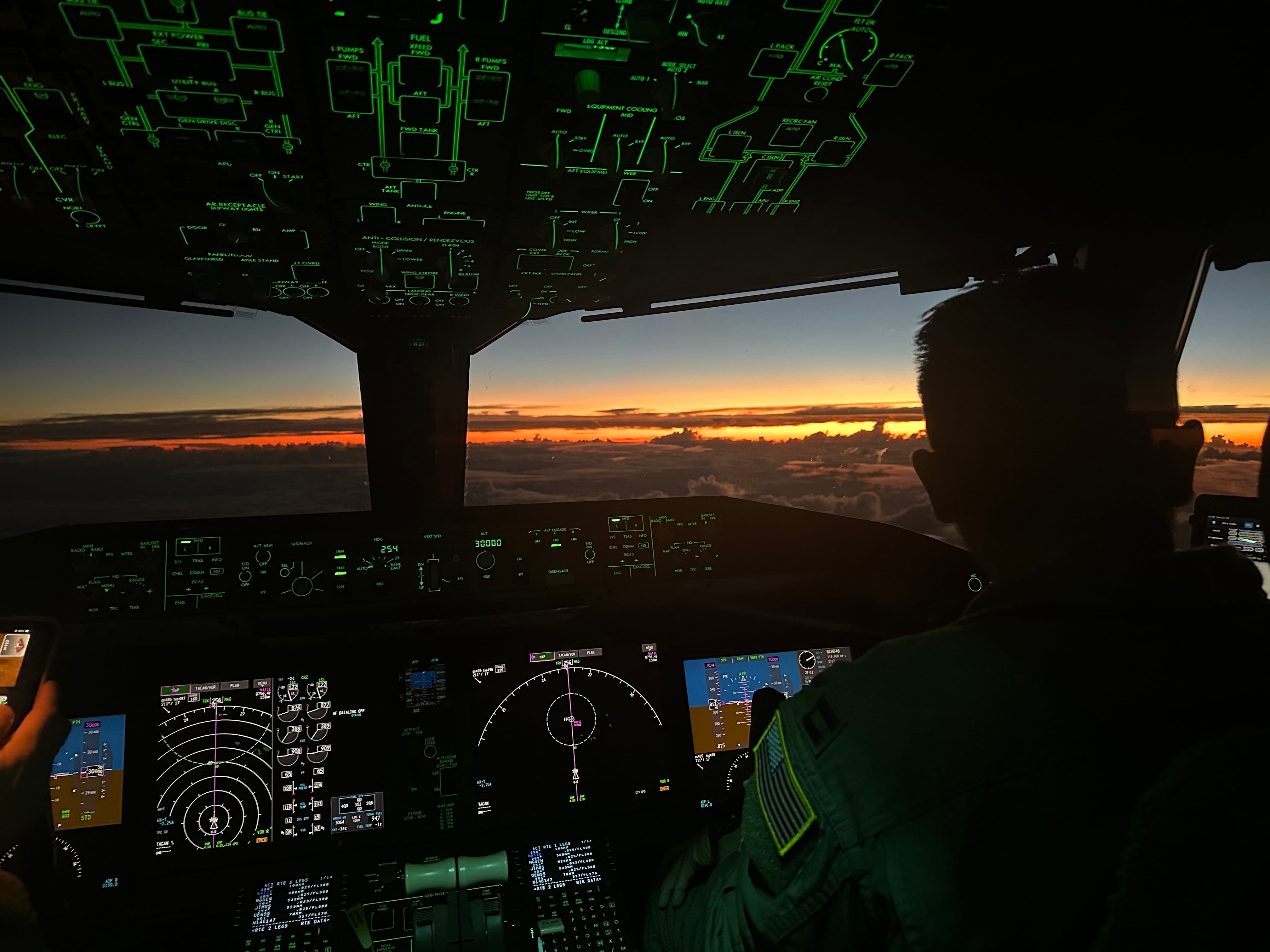Air Force Col. Brent Toth needed to stay awake into the wee morning hours as he prepared for an upcoming marathon mission that would usher him and a crew around the world in less than 48 hours.
For several days in late June, Toth, the commander of the 22nd Operations Group at McConnell Air Force Base, Kansas, relied on his Netflix queue to stay awake, adjusting his sleep cycle to go to bed around 3:30 a.m. local time and waking up around noon.
“There was a bunch of things in the queue,” Toth said of his binge sessions on the streaming platform. “And I just kind of let it pick things out for me.”
Flying a KC-46A Pegasus tanker nonstop around the globe takes stamina. For the McConnell-based airmen who recently pulled it off on REACH046, it involved adjusting work-sleep cycles to synchronize with events, like crucial aerial refueling rendezvous that require razor-sharp focus, that helped make the sortie a success.
RELATED

“Trying to stay up … until 4 a.m. is difficult, especially when you’re used to getting up around that time to come into work,” Toth said.
Dubbed “Project Magellan,” the flight builds on a sortie that took off from McConnell in May 2022, when a KC-46 from the 22nd Air Refueling Wing flew a record 24 hours straight around the contiguous United States. It also comes on the heels of a staggering 36-hour mission flown by the New Hampshire Air National Guard’s 157th Air Refueling Wing, one that went halfway around the world and back in November of that year.
The latest mission took off from McConnell June 29 and landed back at the Kansas base, home to the 22nd ARW, on July 1. The crew flew more than 24,000 miles in the process.
Along the way, the aircraft and its crew of nine airmen — Toth as the aircraft commander, three additional instructor pilots, two flying crew chiefs, two boom operator instructors and a flight surgeon — stretched the endurance of the Air Force’s newest tanker jet as the service prepares for a protracted battle in the Pacific, one in which it may need to surge troops and supplies quickly.
The first KC-46A was delivered to McConnell in 2019. The Air Force plans to buy 179 KC-46A tankers from Boeing under a $4.9 billion deal; so far, the aerospace contractor has delivered 84 of the aircraft to the Air Force, including five so far this year, according to a Boeing spokesperson and an announcement of second-quarter deliveries released Tuesday.
RELATED

“We wanted to demonstrate the ability of the KC-46 to go around the world,” while also demonstrating Air Mobility Command’s shifting focus on the Pacific, Toth said. “So, we decided that we needed to go westbound based on showing our ability to project power anywhere in the world, but starting out in the Pacific.”
The crew relied on beyond-line-of-sight and other onboard communications to link with air and ground assets as it traversed the globe, aligning with an initiative set by Air Mobility Command’s four-star boss Gen. Mike Minihan to connect 25% of the command’s fleet by 2025.
Heading west, REACH046 gassed up midair four times, meeting up with tankers from the 22nd ARW that were prepositioned at Andersen Air Force Base, Guam; U.S. Central Command; and RAF Mildenhall, England.
It also offloaded fuel to eight other aircraft during the trip, including two KC-46As from McConnell, one of which left with REACH046 and gassed up over the California coast; a C-17 Globemaster III it met in U.S. Indo-Pacific Command; two F-15 Strike Eagles on a sortie in CENTCOM; and three B-2 Spirit Bombers from Whiteman Air Force Base, Missouri.
Coordinating those rendezvous, which requires scheduling airspace, took months of advance planning, and was lead by Capt. Cody Donahue, a pilot and executive officer from the 22nd OG.
“Air refueling is all about being at a certain point in space at a certain time,” Toth said.
Real-time updates were crucial in achieving those goals, as the aircraft was often beyond radio contact for long stretches of the flight, Toth said. Two teams of four crew members, divided into ‘A’ and ‘B’ teams, alternated between flying and sleeping in cycles that shortened to match critical needs, such as flying over the ocean or during nighttime, according to Capt. Jacob Heyrend, Magellan’s flight surgeon.
Crews were monitored for fatigue during the flight, including wearing smart devices. They were also enrolled in a Department of Defense-Army fatigue study run by a contractor that has advised NASA astronauts and professional athletes and performers.

While the crew continues to evaluate lessons learned, they credit their success in part to putting in early work with Heyrend to customize sleep schedules. Three days before takeoff, Team A adjusted their bedtime to approximately 4 a.m., while Team B began retiring at 4 or 5 p.m.
“My dinner was basically during my kids’ breakfast,” Capt. T.J. Buckley, a pilot and member of Team B, said.
Early planning, coupled with climate control, adjustable LED lighting and assigned bunks helped the airmen get a good night’s — or day’s — sleep in the air. Shift handoffs required trusting their fellow airmen to control the aircraft while one team focused on resting up.
Project Magellan also notched firsts for the airmen, as well as for the Air Force, with a new record for the KC-46 as well as the longest sortie for AMC.
For Master Sgt. Patrick Murray, a boom operator on Team B, fueling multiple aircraft became a highlight of his 16-year career.
“Our training and our mission preparation and briefs leading up to executing this mission were fantastic,” Murray said.
It also included a birthday.
Capt. Daison Batangan, an instructor pilot who flew on Team A, turned 31 somewhere between Hawaii and Guam, based on Kansas local time, on June 30. The crew celebrated with strawberry shortcake and an unlit candle, packed by Batangan’s wife.
“The crew was able to wake up from their slumber and sing me ‘Happy Birthday’,” he said.
Courtney Mabeus-Brown is the senior reporter at Air Force Times. She is an award-winning journalist who previously covered the military for Navy Times and The Virginian-Pilot in Norfolk, Va., where she first set foot on an aircraft carrier. Her work has also appeared in The New York Times, The Washington Post, Foreign Policy and more.





